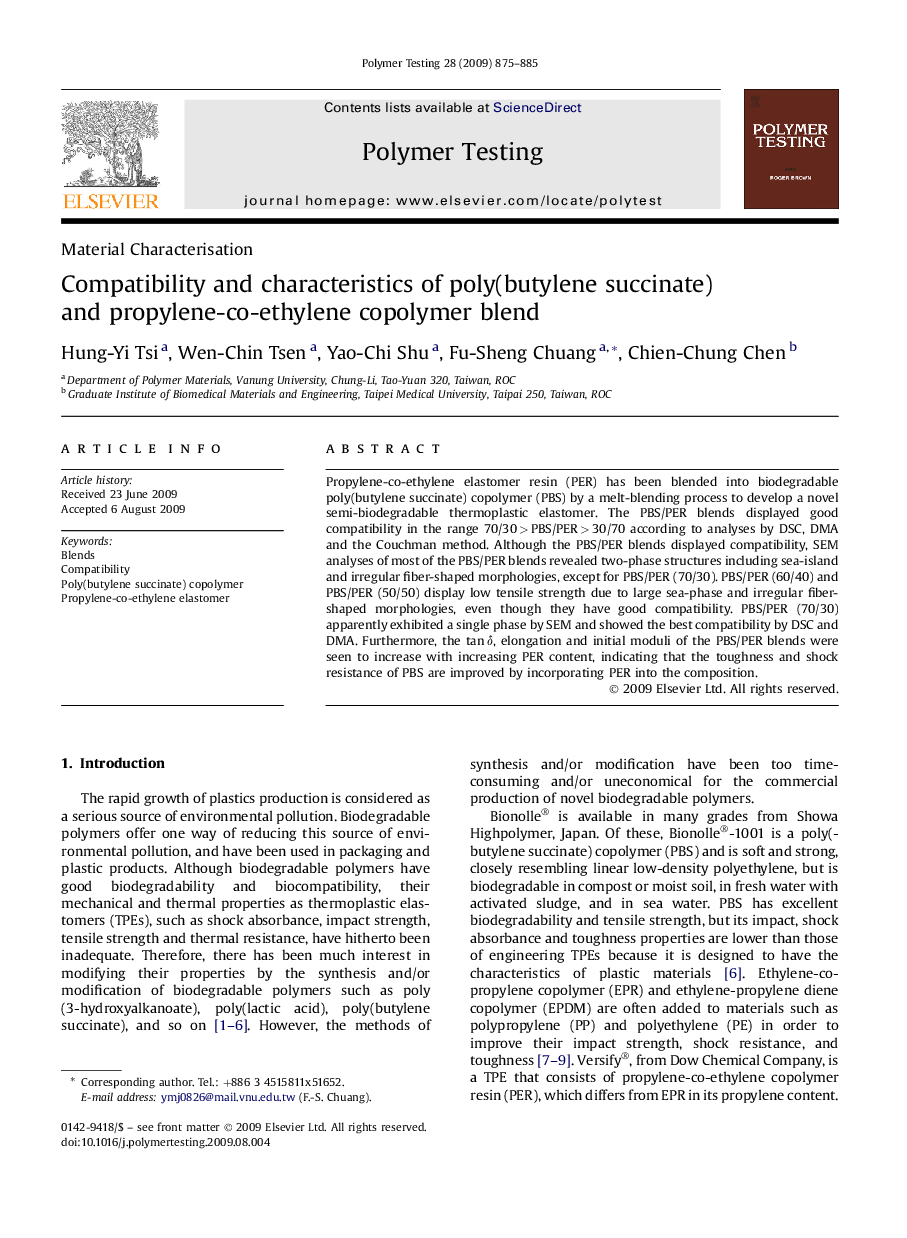| Article ID | Journal | Published Year | Pages | File Type |
|---|---|---|---|---|
| 5207216 | Polymer Testing | 2009 | 11 Pages |
Propylene-co-ethylene elastomer resin (PER) has been blended into biodegradable poly(butylene succinate) copolymer (PBS) by a melt-blending process to develop a novel semi-biodegradable thermoplastic elastomer. The PBS/PER blends displayed good compatibility in the range 70/30 > PBS/PER > 30/70 according to analyses by DSC, DMA and the Couchman method. Although the PBS/PER blends displayed compatibility, SEM analyses of most of the PBS/PER blends revealed two-phase structures including sea-island and irregular fiber-shaped morphologies, except for PBS/PER (70/30). PBS/PER (60/40) and PBS/PER (50/50) display low tensile strength due to large sea-phase and irregular fiber-shaped morphologies, even though they have good compatibility. PBS/PER (70/30) apparently exhibited a single phase by SEM and showed the best compatibility by DSC and DMA. Furthermore, the tan δ, elongation and initial moduli of the PBS/PER blends were seen to increase with increasing PER content, indicating that the toughness and shock resistance of PBS are improved by incorporating PER into the composition.
